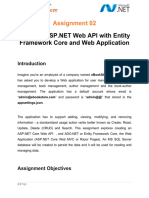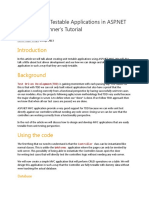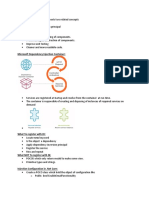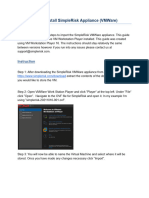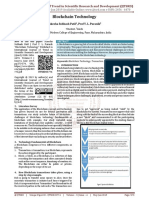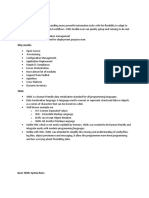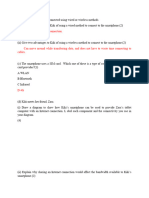0% found this document useful (0 votes)
28 views8 pagesNET Reference Sheet3
The document explains how to implement CRUD operations using Entity Framework Core's DbContext in an ASP.NET Core MVC application, including the use of migrations and dependency injection. It introduces the Repository Pattern, which separates data access logic from business logic, enhancing maintainability and testability. The document provides examples of repository interfaces, concrete implementations, and service layers to facilitate clean data access and manipulation.
Uploaded by
jeevanshugoel100Copyright
© © All Rights Reserved
We take content rights seriously. If you suspect this is your content, claim it here.
Available Formats
Download as PDF, TXT or read online on Scribd
0% found this document useful (0 votes)
28 views8 pagesNET Reference Sheet3
The document explains how to implement CRUD operations using Entity Framework Core's DbContext in an ASP.NET Core MVC application, including the use of migrations and dependency injection. It introduces the Repository Pattern, which separates data access logic from business logic, enhancing maintainability and testability. The document provides examples of repository interfaces, concrete implementations, and service layers to facilitate clean data access and manipulation.
Uploaded by
jeevanshugoel100Copyright
© © All Rights Reserved
We take content rights seriously. If you suspect this is your content, claim it here.
Available Formats
Download as PDF, TXT or read online on Scribd
/ 8







